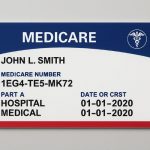Clear vision is about more than just seeing the world sharply – it’s a critical pillar of safety, independence, and quality of life for seniors. Yet, the high cost of an eye exam can sometimes cloud this essential aspect of health, causing your loved one to put off a check-up and risk a preventable decline.
The good news is that clear sight doesn’t have to come at a high price. There are numerous programs and resources dedicated to making eye care both accessible and affordable, ensuring that cost is never a barrier to maintaining their well-being.

Seniors are at a Higher Risk of Vision Loss
The risk of developing serious eye diseases and major vision problems increases with age.
For example, glaucoma affects 1 in 10 people over 80. And even people who previously had 20/20 vision can develop it.
Another top concern is age-related macular degeneration. It’s a leading cause of vision loss for people aged 50 and older.
That’s why it’s so important to be proactive about protecting your older adult’s sight.
Good vision helps them stay independent longer, reduces fall risk, and enables them to continue enjoying their favorite activities.
We explain how regular eye exams help prevent vision loss, how to get financial help for eye care, and what a comprehensive eye exam should include.
Regular Eye Exams Protect Against Vision Loss
Because of the higher risk, the National Eye Institution recommends that adults over age 60 get a comprehensive eye exam with dilation every 1 – 2 years.
Regular exams help protect eye health because problems can be detected early – but be warned, the quick exams at the eyeglass store at the mall typically aren’t comprehensive enough.
If an eye disease is found during an exam, proper treatment can be started early to prevent blindness or significant vision loss.
Financial Help for Vision Care is Scarce
Eye exams for seniors can be affordable even without insurance coverage. Many state and national resources help people with vision problems.
The National Eye Institute has a list of organizations that provide financial help for:
- Eye exams
- Eye surgery
- Eyeglasses
- Eye-related prescription drugs
- Eye-related government programs
Social workers at local hospitals or other community organizations are another source for help.
They often know about local community resources that help provide financial or medical assistance.
What does a Comprehensive Eye Exam Include?
A comprehensive dilated eye exam has four parts:
- Dilation – Widening the pupils helps eye doctors see essential tissues at the back of the eye, like the retina, the macula, and the optic nerve.
- Tonometry – A test that helps detect glaucoma by checking pressure inside the eye.
- Visual field test – This measures your side (peripheral) vision.
- Visual acuity test – A test where you read an eye chart, which helps eye doctors measure how well you see at different distances.
Next Steps: Find affordable eye exams, surgery, glasses, and medication
Final Thoughts on Vision Care for Aging Adults
Helping your loved one access an affordable eye exam is a profoundly impactful way to protect their independence. It’s an investment that safeguards their ability to read, drive, recognize faces, and navigate their world with confidence and security.
By taking advantage of these resources, you’re not just getting a prescription for glasses; you’re helping to prevent isolation, reduce fall risk, and ensure they continue to see and enjoy all the details of life clearly. Don’t let cost keep them in the dark; a clearer, brighter view of the world is well within sight.
Recommended for you:
- 4 Common Eye Diseases That Cause Blindness in Aging Eyes
- 6 Age-Related Changes That Increase Senior Fall Risk
- Watch Out for These 5 Top Diabetes Complications
About the Author

Connie is the founder of DailyCaring.com and was a hands-on caregiver for her grandmother for 20 years. (Grandma made it to 101 years old!) She knows how challenging, overwhelming, and all-consuming caring for an older adult can be. She also understands the importance of support, especially in the form of practical solutions, valuable resources, and self-care tips.













What is a bleeding at the back of the eye mean and what is the treatment for it
That’s a serious issue that requires medical attention. We strongly recommend that you see an eye doctor right away for proper diagnosis and treatment.